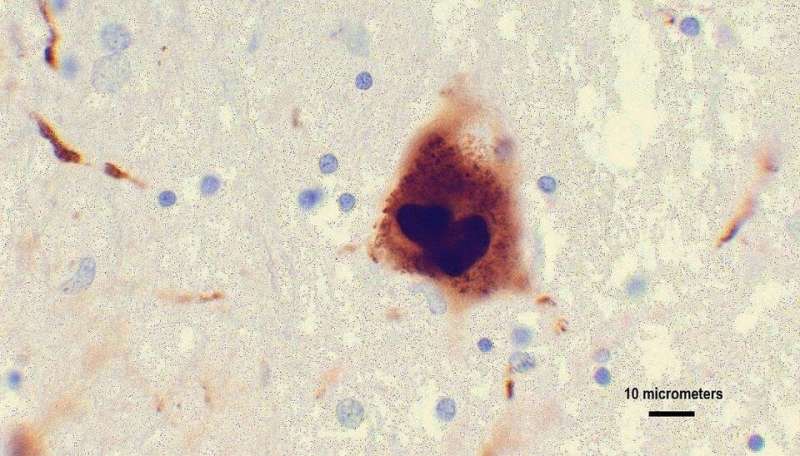Researchers ID location on brain protein linked to Parkinsons disease development

Johns Hopkins Medicine researchers say they have pinpointed the section of alpha-synuclein, a protein in the brain that causes it to latch onto brain cells called neurons and likely drives the development of Parkinson’s disease, a progressively worsening disorder that disrupts movement and neurological functions. The findings may help scientists develop a treatment that curbs the protein’s improper binding, perhaps slowing or stopping the progression of Parkinson’s.
Results of the study, conducted using cell studies and mouse neurons, were published online June 25, 2021 in the Proceedings of the National Academy of Science.
In Parkinson’s disease, the alpha-synuclein protein can misfold and take an abnormal shape, enabling it to bind and clump onto a neuron’s surface. Clumps of misfolded alpha-synuclein, known as alpha-synuclein fibrils, spread to other healthy neurons and ultimately kill these cells as the fibrils pile up.
“These findings are significant because we determined what part of alpha-synuclein fibrils is important in the binding process and how it leads to Parkinson’s progression,” says study co-author Xiaobo Mao, Ph.D., assistant professor of neurology at the Institute for Cell Engineering of the Johns Hopkins University School of Medicine.
Through several molecular and cell studies, the research team focused on a region at the tip of the misfolded alpha-synuclein fibrils called the C terminus, along with the addition of p129, a chemical group near the end of the fibril. The researchers knew from previous studies that both of these characteristics enable the fibrils to bind to neurons and cause cell death.
Mao and his Johns Hopkins Medicine colleagues—including study co-author and Parkinson’s disease researcher Ted Dawson, M.D., Ph.D., who is director of the Institute for Cell Engineering and professor of neurology at the Johns Hopkins University School of Medicine—determined the C terminus can bind receptors on the neurons due to the receptors’ positive electrical charges. When the receptors were removed, the C terminus could not clump to neurons and spread to other healthy cells.
In healthy alpha-synuclein, the C terminus is covered and cannot bind to neurons.
The researchers also investigated p129, a group of molecules in alpha-synuclein fibrils that have an extra chemical group, and are present in about 95% of people with Parkinson’s and other Lewy body neurodegenerative diseases, such as Lewy body dementia. When the alpha-synuclein fibrils with p129 and the C terminus were injected into mouse neurons, researchers found that those fibrils bound with neuron receptors and spread faster. This contributed to quicker cell death and disease progression.
To slow the progression of clumping alpha-synuclein fibrils, the researchers hope to develop treatments that target the binding process.
Source: Read Full Article


